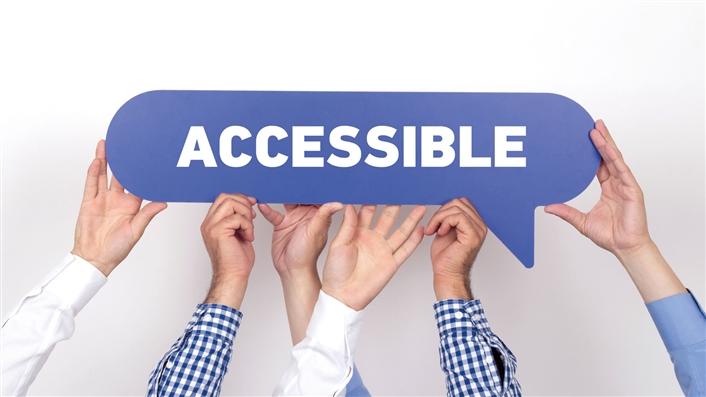Digital accessibility allows for productivity and inclusion for people with disabilities, however is beneficial to almost everyone
When referring to accessibility in terms of environments, products, services, and devices what is being discussed is how user-friendly the element is. In the same vein, digital accessibility addresses how user-friendly access to the internet and technology products (apps, ticket machines, etc.) are. Websites are often difficult to navigate, screen readers are frequently incompatible with publicly available documents and video and audio material is limited. Disabilities are multifaceted, so the barriers and limitations faced by people with disabilities are very diverse and require a wide lens through which adaptation is provided.
Talk to text and speech technology, originally developed to facilitate reading and writing for people with vision impairments, are now widely used by able bodied people in forms of voice navigation (cars), smart devices (texting, digital assistants), and read aloud documents. Digital accessibility is at the core most useful to people with disabilities such as: vision, sensory, physical, auditory, neurological, and cognitive disabilities, However, as we age, many of us will fall in to one of these categories.
Many small changes amount to big differences in how accessible and inclusive technology becomes. Adding Alt Text to Images will describe the content of the image to a person who cannot see it. This text is not visible to anyone viewing the page, yet a screen reader will detect it.
Screen readers (text to speech), will read the content of a page aloud benefiting persons with vision impairments.
Audio description is becoming more common when viewing children’s shows as this feature is inclusive for children with vision impairments. Non-PDFs (such as Word documents), are more accessible than PDFs as some screen readers cannot decipher them.
Speech-recognition enablers users that might have limited mobility in navigating digital devices and websites. Gesture navigation captures those who might find it difficult to navigate lengthy or complicated pathways when accessing various features.
Closed captions enable hearing impaired people equal opportunities to access video content. Finally improving the general usability of reading content such as: clear sections or subsection, bold headings, images that don’t flash, revolve or auto rotate “too frequently”, and text that “gets to the point” rather than lengthy professional jargon provide users with sensory or cognitive difficulties to access the information.
There is a lot of information available on how to make digital content more accessible including the Web Content Accessibility Guidelines (WCAG 2.0). This document provides guidelines around how to make web content suitable and accessible to people with disabilities and has been developed internationally in consultation and collaboration with many stakeholders.
References:
https://link.springer.com/chapter/10.1007/978-3-319-94277-3_24
https://www.sciencedirect.com/science/article/pii/S0970389617301131
https://eric.ed.gov/?id=EJ1123793
https://www.w3.org/standards/webdesign/accessibility
